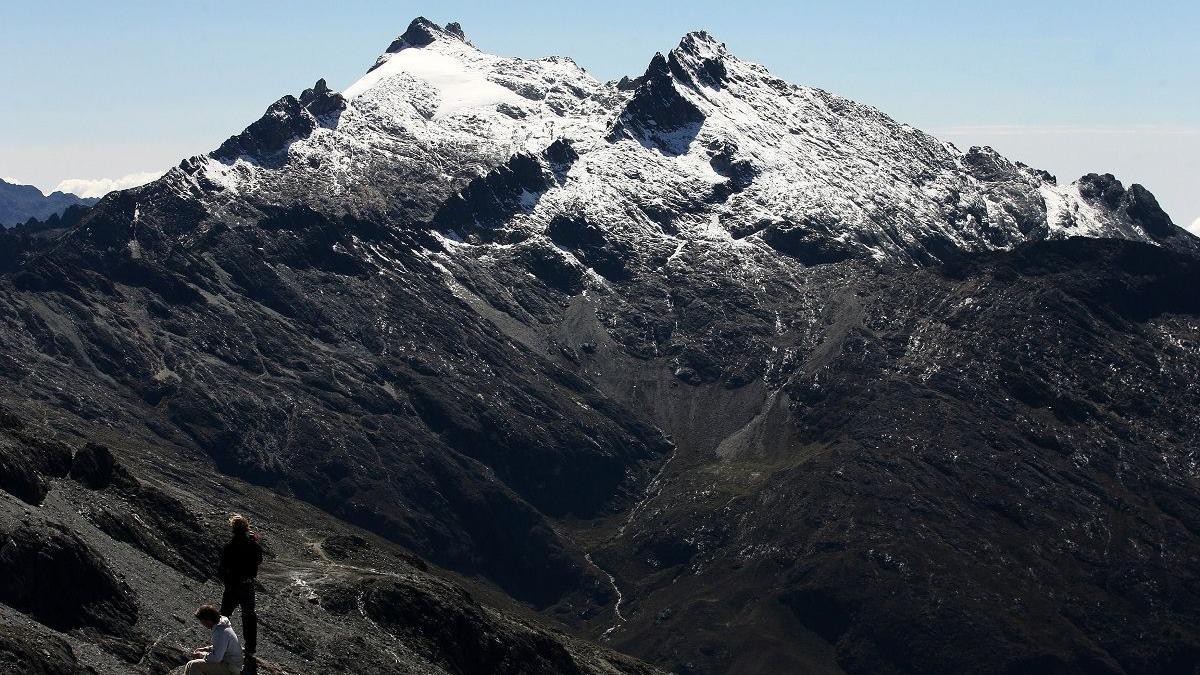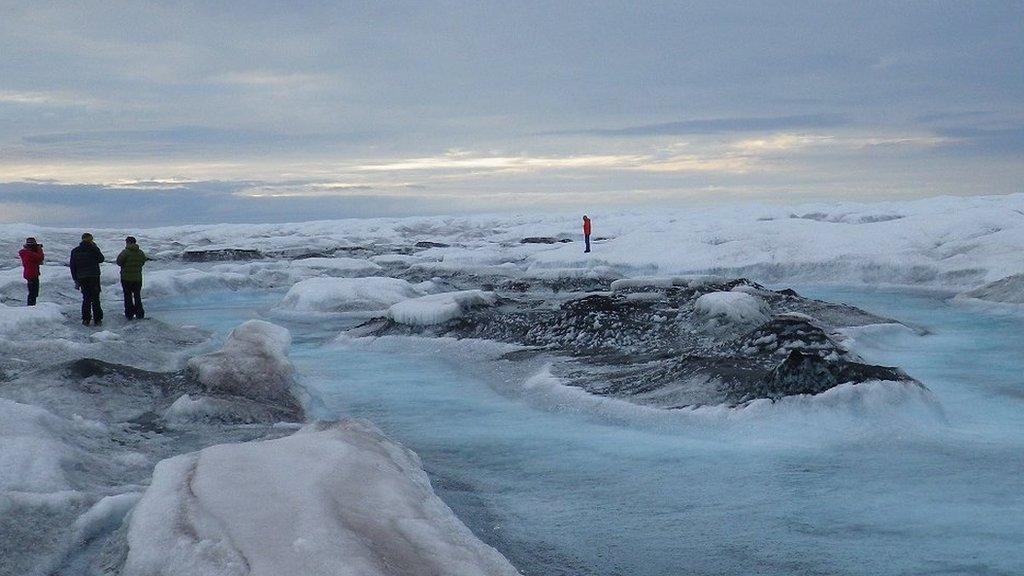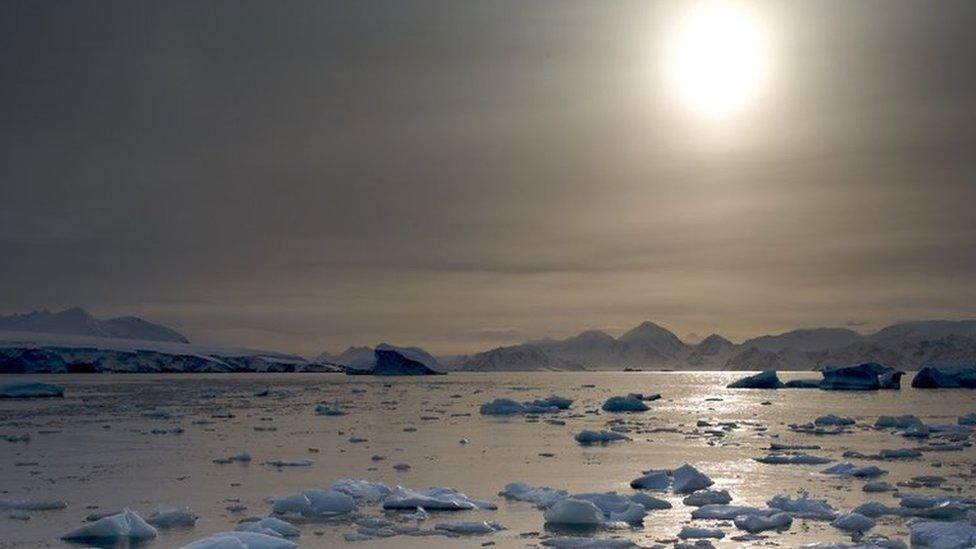Venezuela may be first nation to lose all its glaciers

Humboldt peak seen in 2008, before its glacier melted away
- Published
Venezuela may be the first nation in modern history to lose all its glaciers after climate scientists downgraded its last one to an ice field.
The International Cryosphere Climate Initiative (ICCI), a scientific advocacy organisation, said on X that the South American nation's only remaining glacier - the Humboldt, or La Corona, in the Andes - had become "too small to be classed as a glacier", external.
Venezuela has lost at least six other glaciers in the last century.
With global average temperatures rising due to climate change, ice loss is increasing, helping to raise sea levels around the world.
"There has not been much ice cover on the last Venezuelan glacier since the 2000s", Dr Caroline Clason, a glaciologist at Durham University, told Newsround. "Now it's not being added to, so it has been reclassified as an ice field."
In March, researchers at the University of Los Andes in Colombia told AFP the glacier had shrunk from 450 hectares to just two.
Luis Daniel Llambi, an ecologist at the university, told the Guardian that it had now shrunk to less than that.
While there is no global standard for the minimum size a body of ice must be to qualify as a glacier, the US Geological Survey says a commonly accepted guideline is around 10 hectares.
One study, external, published in 2020, suggested the glacier shrank to less than this sometime between 2015 and 2016 - though it was still considered Venezuela's last glacier by Nasa in 2018.
Dr James Kirkham and Dr Miriam Jackson, glaciologists with the ICCI and the International Centre for Integrated Mountain Development respectively, explained that "glaciologists recognise a glacier as an ice mass that deforms under its own weight".
They told the BBC in a joint statement: "Glaciologists often use a criteria of 0.1 sq km [10 hectares] as a common definition, but any ice mass above that size still has to deform under its own weight [to count]."
They suggested that there may have been issues accessing the Humboldt glacier in recent years, which could have delayed the publication of the measurements.
Professor Mark Maslin, a professor of earth system sciences at University College London, said an ice field like the Humboldt - roughly equivalent to the area of two football pitches - "is not a glacier".
"Glaciers are ice that fills valleys – that’s the definition – and therefore I would say Venezuela has no glaciers whatsoever," he told the BBC.

The Humboldt glacier, pictured in relation to the city of Merida (top left), in 2015
In December, the Venezuelan government announced a project to cover the remaining ice with a thermal blanket it hoped would stem or reverse the thawing process.
But the move drew criticism from local climate scientists, who warned that the covering could contaminate the surrounding habitat with plastic particles as it degraded, according to Spanish newspaper El Pais.
Prof Maslin said mountain glacier loss was "not directly reversible" as to survive through the summer months they needed enough ice to reflect sunlight and keep the air around it cool.
"Once a glacier’s gone, the sunlight heats the ground, makes it much warmer and makes it much less likely to actually build ice up over the summer," he said.
Maximiliano Herrera, an extreme weather researcher, wrote, external on X/Twitter that the next countries that were likely to become glacier-free were Indonesia, Mexico and Slovenia.
Prof Maslin said these suggested nations "make logical sense" because of their relative proximity to the equator and relatively low-lying mountains, which made their ice caps more susceptible to global warming.
"The warm zones are just expanding upwards and outwards with climate change," he said, pushing the point at which snow and ice can form year-round higher.
The author of several books on climate change said these smaller glaciers – like the one recently lost in Venezuela – did not contain enough ice to substantially raise sea levels when they melt. But in some regions, glaciers play a crucial role in supplying communities with fresh water, particularly during hot, dry periods.
"Once you get rid of that, the problem is you’re then purely reliant on spot rainfall," he said.
Dr Kirkham and Dr Jackson said: "The latest projections show that between 20 and 80% of glaciers globally will be lost by 2100 (with significant regional variation), depending on the emissions pathway followed."
They said that even though "a portion of this loss is already locked in", rapidly lowering CO2 emissions could save other glacial deposits, "which will have enormous benefits for livelihoods, and energy, water and food security".
- Published7 February 2023

- Published17 November 2022

- Published23 October 2023
